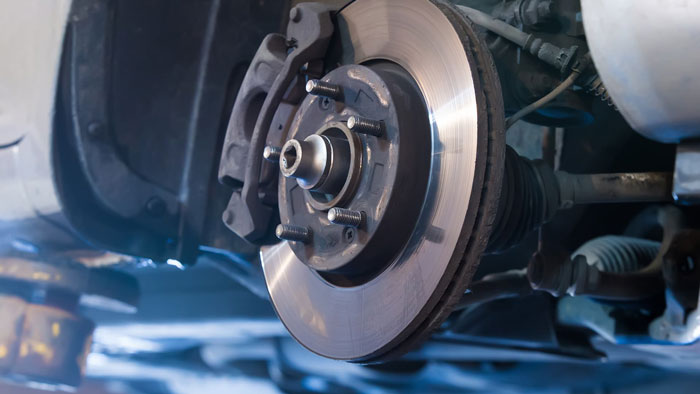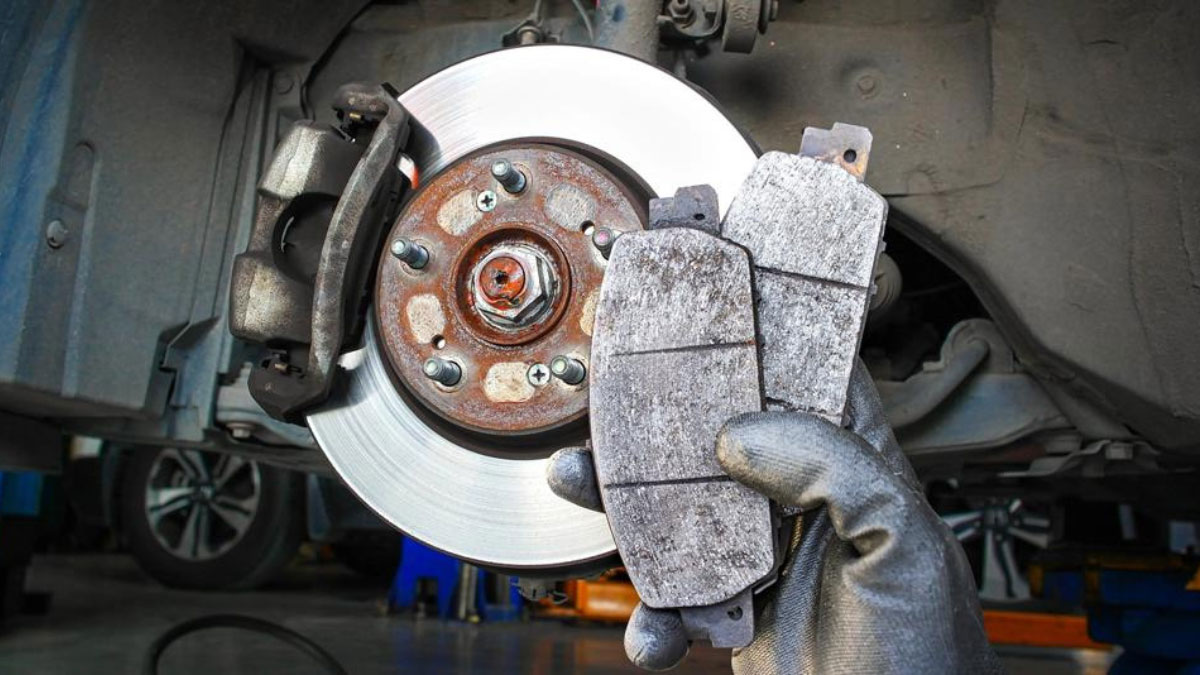So, you’re cruising down the road, wind in your hair, music blasting, and suddenly, you need to hit the brakes. But wait, do you know how thick your brake pads should be? Well, buckle up, because I’m about to jump into the wild world of brake pad thickness and the minimum depth required to keep you safe on the road.
Picture this: your brake pads are like the unsung heroes of your car, quietly doing their job until one day, they’re worn down to the nub. In this text, I’ll break down the importance of maintaining the right brake pad thickness and why it’s crucial for your safety and the well-being of your vehicle. So, grab a snack, sit back, and let’s unravel the mystery of brake pad depths together.
Understanding Brake Pads and Their Functions
Ah, brake pads – the unsung heroes of our four-wheeled companions, ensuring our safe journey on the roads. Let’s jump into the intriguing area of brake pads and unravel their pivotal role!

How Brake Pads Work
Brake pads, those tiny but mighty components, are the undercover agents of your car’s braking system. When you step on the brake pedal, they’re the first responders, applying friction to the brake rotors and slowing down your vehicle.
- Friction is Key: As the brake pads clamp down on the rotating brake discs, friction is generated, converting kinetic energy into thermal energy, eventually halting your car’s motion.
- Material Matters: These pads are crafted from various materials like ceramics, semi-metallic, or organic compounds. Each material choice impacts factors like durability, noise levels, and braking performance.
Types of Brake Pads
Let’s explore the diverse world of brake pads and their unique characteristics:
- Ceramic Brake Pads: Known for their quieter operation and cleaner wheels, these pads offer excellent braking performance, making them a popular choice for everyday driving.
- Semi-Metallic Brake Pads: Ideal for high-performance vehicles, these pads handle heat exceptionally well but may produce more noise and wear down the brake rotors faster.
- Organic Brake Pads: Made from non-asbestos organic materials, these pads are budget-friendly and eco-friendly. While they provide a smooth, quiet ride, they might wear out faster than other types.
What Is the Minimum Thickness for Brake Pads?
Brake pad thickness is crucial to your safety on the road. Imagine brake pads as the silent superheroes of your car, always ready to save the day. They work by creating friction to slow down your vehicle, preventing you from turning into a real-life speed racer.
Why Minimum Thickness Is Critical
I know what you’re thinking – “Who cares about a little thickness?” Well, let me tell you, when it comes to brake pads, size matters! Here’s why keeping an eye on that minimum thickness is as important as remembering where you parked your car:
- Safety First: Thicker brake pads mean more effective stopping power. You don’t want to be cruising down the highway only to realize your brake pads are as thin as your patience in rush hour traffic.
- Smooth Stops: Thicker brake pads provide smoother stops, ensuring you glide to a halt instead of screeching to one like a car in a bad action movie.
- Avoiding Cringe-worthy Sounds: Thin brake pads can lead to that cringe-inducing metal-on-metal sound when you brake. Trust me; your ears will thank you for maintaining the right thickness.
So, the next time you wonder about the minimum thickness for brake pads, remember – it’s not just about size; it’s about safety and a smoother ride.
How to Check Brake Pad Thickness
As a car aficionado or someone who just likes to tinker with vehicles, you’ll find it useful to know how to check your brake pad thickness without hitting the panic button. Let’s jump into this brake-tastic journey together!
Tools Needed for Measuring Brake Pad Thickness
- A flashlight: Shed some light on those brake pads; they love the attention!
- A ruler or a measuring tool: Size does matter when it comes to brake pad thickness.
- A piece of chalk or a marker: Time to mark your territory on those pads!
- A pad thickness gauge: The superhero of this story, ready to rescue you from unsafe braking.
- Locate the Brake Pads: Find those elusive pads behind your wheels; they’re not playing hide and seek, I promise.
- Measure Pad Thickness: Whip out your measuring tool and witness the power of numbers as you gauge those pads’ thickness.
- Use the Pad Gauge: Let the pad thickness gauge work its magic; it’s like a wizard’s wand for your brake pads.
- Inspect Wear Patterns: Check for uneven wear like a detective solving a mystery; those brake pads might have a story to tell.
- Mark the Measurement: Use the chalk or marker to leave your mark on the pad; it’s like signing a masterpiece but with brake pads.
- Compare to Manufacturer’s Specs: It’s judgment day for your brake pads; ensure they measure up to what the manufacturer intended.
- Repeat for all Pads: Don’t leave any pad unturned; give them all equal attention and love.
Signs of Worn Brake Pads
Ah, the melodious sound of screeching brakes – music to the ears of anyone standing nearby. Let’s explore the telltale signs that your brake pads are the unsung heroes craving a little attention.
Unusual Noises When Braking
When your car starts singing a song of friction every time you hit the brakes, it’s a clear sign that your brake pads are crying out for help. If you hear squeaking, grinding, or squealing, it’s their way of saying, “Hey, buddy, we’re a bit worn out over here!”
Vehicle Pulling to One Side
Does your car have a mind of its own, veering to the left or right when you brake? It’s not possessed; it’s just a sign that one brake pad is working harder than the others. Think of it as the car’s way of doing the “brake pad shuffle.”
Brake Light Indicator
Ah, the subtle dance of light on your dashboard, illuminating the symbol that says, “Hey, your brake pads need some love.” If your brake light comes on, it’s not mood lighting; it’s a gentle reminder that it’s time to show your stopping power some TLC.
When to Replace Brake Pads
Let’s jump into the exciting world of knowing when it’s time to replace those trusty brake pads. No cape needed; they’re the unsung heroes of your car, saving the day every time you stop. Buckle up as we explore the timing and significance of changing these essential components.
Recommendations for Replacement Timing
I’d say it’s time for a brake pad swap if you start hearing those weird noises when you hit the brakes – none of that musical screeching, please! If your car suddenly decides it has a favorite side and pulls to it whenever you brake, that’s a red flag waving at you. Oh, and keep an eye on your car’s dashboard; if the brake light joins the party, it’s time to show those pads some TLC.
Importance of Regular Checks
Let’s be real; no one likes surprises, especially when it comes to brakes. Make it a habit to give those pads a regular once-over – they’re like the gatekeepers of your safety. A quick check for even wear patterns can save you from those nail-biting, heart-pounding moments when you press the brake pedal. Remember, a little TLC goes a long way in keeping you safe on the road!
Brake pads might not be in the spotlight, but they’re the real MVPs in ensuring your car stops when you need it to. Keep them happy, and they’ll keep you safe and sound on your journeys.
Conclusion
Well, folks, we’ve reached the end of the road on this brake pad thickness adventure. Remember, brake pads may not be the flashy stars of the car world, but they’re the unsung heroes keeping us safe on the streets. From ceramics to semi-metallic wonders, these little guys play a big role in slowing us down. So, keep an eye (or ear) out for those warning signs like strange noises and sneaky vehicle pulling. Don’t wait until the brake light starts a disco party on your dashboard; stay ahead of the game with regular checks. Let’s give our brake pads the love and attention they deserve for smooth, safe rides ahead!
Frequently Asked Questions
How often should I check my brake pad thickness?
Regularly check your brake pad thickness every 6 months or 6,000 miles, or sooner if you notice any signs of wear like squealing noises or reduced braking efficiency.
Can I drive with worn brake pads?
Avoid driving with worn brake pads to prevent serious accidents. Replace them immediately if you experience signs like grinding noises, vibration while braking, or longer stopping distances.
What are the signs of worn brake pads?
Look out for warning signs such as screeching noises, reduced responsiveness when braking, a vibrating brake pedal, or a dashboard brake warning light illuminating. Address these promptly.
How do I check my brake pad thickness?
Inspect the brake pads for visible wear indicators, measure the pad thickness using a caliper, or consult a professional mechanic to ensure they meet the manufacturer’s recommended thickness level.
When should I replace my brake pads?
Replace your brake pads when they reach 3mm thickness or if you see the wear indicators touching the rotor. Regular maintenance helps ensure safe braking performance and prevents damage to other components.

